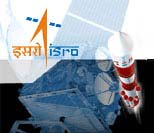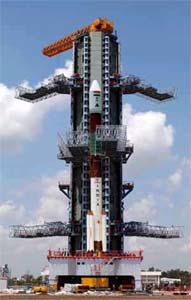Indian Air Force to pilot country’s manned space mission
27 May 2009
 New Delhi: Providing a new twist to an ongoing debate concerning personnel that would be onboard India's first manned flight into space, Indian Air Force officials have stressed that such a flight would indeed carry their personnel. With Indian Space Research Organisation (ISRO) sources sparking off a controversy in recent times by stressing that their personnel would man both the positions onboard any such mission, it may now be the turn of the air force to get a little of its own back, if not all.
New Delhi: Providing a new twist to an ongoing debate concerning personnel that would be onboard India's first manned flight into space, Indian Air Force officials have stressed that such a flight would indeed carry their personnel. With Indian Space Research Organisation (ISRO) sources sparking off a controversy in recent times by stressing that their personnel would man both the positions onboard any such mission, it may now be the turn of the air force to get a little of its own back, if not all.
It has been felt that the controversy was an unseemly one and begged a few questions about ISRO's capability in manning a mission which would have more to do with flight control characteristics rather than scientific payloads.
 "Let me promise you one thing, if there is a (Indian) man on moon (read space), it will be from the Indian Air Force," IAF chief Air Chief Marshal Fali Homi Major has now said.
"Let me promise you one thing, if there is a (Indian) man on moon (read space), it will be from the Indian Air Force," IAF chief Air Chief Marshal Fali Homi Major has now said.
Reports suggest that the IAF will train two of its personnel for the mission, in collaboration with the ISRO.
ACM Major added that the IAF's Institute for Aerospace Medicine is working closely with ISRO on the project. Though ISRO may have climbed down from its earlier stand of having both the crew members from within its own ranks and is now asking that one of its members should be on board, the air force has proposed that both the crew members should be IAF personnel.
Reports suggest that though ISRO is insisting that one of the crew members be an ISRO mission specialist, the IAF has offered to train one of its engineers for the same role nad may have postponed the final decision for a later date. It is likely that a ISRO and IAF mission specialist may train for the same role, with the final composition of the crew to be decided at some later date.
 Under an ambitious $2.5 billion plan, ISRO has proposed to put two people into space orbit for seven days.
Under an ambitious $2.5 billion plan, ISRO has proposed to put two people into space orbit for seven days.
If successful, the mission will make India only the fourth country, after the US, Russia and China, to send a manned mission into space.
IAF officials have suggested that the manned flight will also allow the country to acquire inter-continental ballistic missile (ICBM) capability. This will happen as a larger booster rocket is required to put a manned spacecraft into orbit. Other spinoffs would include a boost to the country's reconnaissance capability. The country's communications satellites would need to be inter-linked in order to keep in touch with orbiting astronauts. IAF officers suggest that against the current 15 minutes of daily live feed from the satellites, the manned mission will result in 90 minutes of live feeds.
India's manned mission will follow in the footsteps of the incredibly successful Chandrayaan lunar mission. The lunar probe, the most sophisticated amongst the lot currently orbiting the moon, including Chinese and Japanese probes, has catapulted Indian space capabilities into another orbit altogether making India a recognised space power.
India is planning to launch its second unmanned lunar mission, Chandrayaan-2, in 2011.













.jpg)






.jpg)









